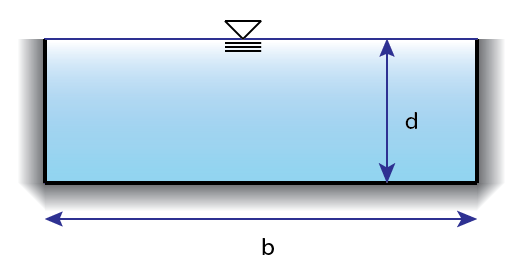Blog Archives
Horizontal Curves Definitions and Formulas
Horizontal Curve Formulas
$$L = 100\frac{I^{\circ}}{D^{\circ}}$$
$$L = RI_{\text{radians}}$$
$$L = \frac{RI 2 \pi}{360^{\circ}}$$
$$ R = \frac{5729.578}{D}$$
$$ T = R\tan\frac{I}{2}$$
$$ LC = 2R\sin\frac{I}{2}$$
$$ E = T\tan\frac{I}{4}$$
$$ M = E\cos\frac{I}{2}$$
Open Channel Flow – Manning Equation
Manning’s Equation for open channel flow is the go-to equation for open channel problems. An open channel is basically anything that flows out in the open above ground as well as pipes that are not flowing to their full capacity.
$$ Q = \frac{1.49AR^{\frac{2}{3}}\sqrt{s}}{n} $$
Q is the flow and can be in either cubic feet per second (US) or cubic meters per second (SI). When using the equation for SI units leave out the 1.49 factor!
A is the Area of the channel. This can be determined with geometry for the easy rectangular and trapezoidal shapes or using table equations in combination with depth, base length, diameter etc. Find where channel geometry equations are in your reference.
Closed Conduit Hydraulics – Friction and Minor Losses
Friction and minor losses are glossed over in the darcy-weisbach article but I want to throw in some extra notes here. Friction occurs over every bit of length of a close-conduit system and is usually a surprisingly high amount of energy loss. Friction depends on the material of the pipe and the velocity of flow. The formula for frictional head loss IS the Darcy-Weisbach equation.
$$ h_f = f \frac{L}{D}\frac{V^2}{2g} $$
Seismic Principles Exam and some Seismic Design
A few days ago I had an opportunity to sit down with a coworker during lunch and discuss the California Seismic Principles Exam.
The general consensus I have received from other people is that this test is HARD. The test is 2.5 hours long and contains 50 questions, leaving you around 3 minutes per question. The topics of the test are detailed HERE.
My coworker however, passed the entire PE including Seismic Principles on his first try in April 2011. It was nice to be able to sit down with him and work through a few example problems and talk about what materials he used and how he studied.
Here are a few notes on topics you will encounter on the exam. Click here to continue reading




